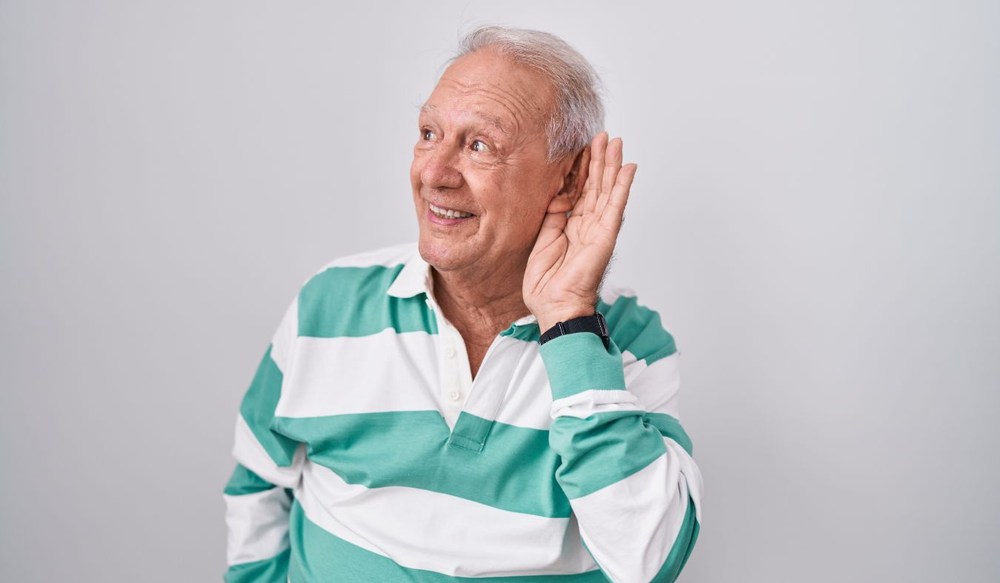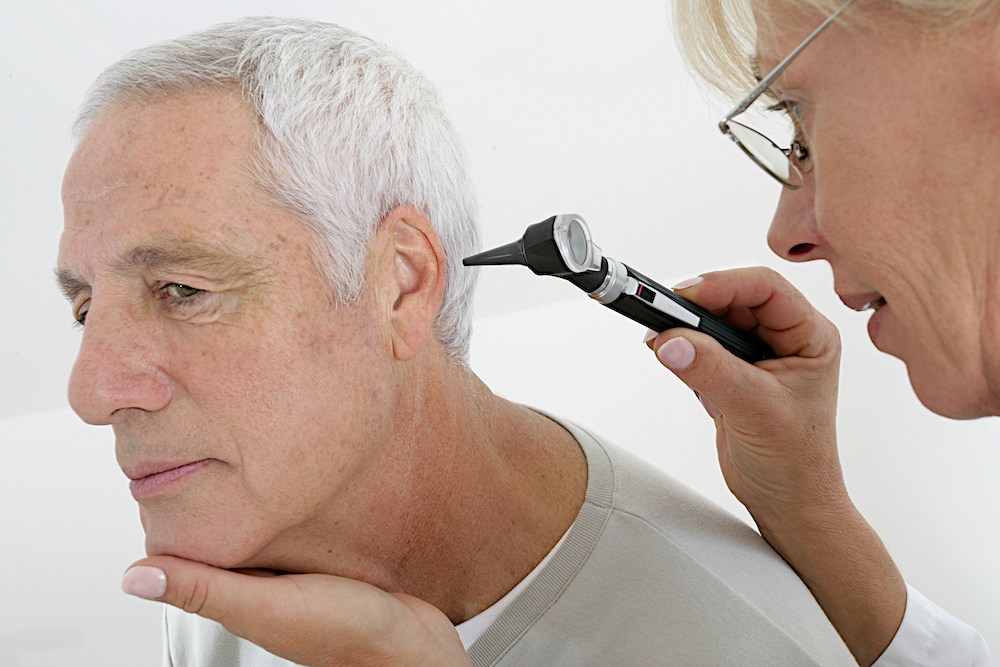How Audiologists Stay Current with Industry Changes
The field of audiology is changing rapidly as new technologies reshape how
New Location Now Open in Fort Mitchell! LEARN MORE →

By: Vanessa Ewert, Au.D, LIC.-A | April 30, 2024
Think about a future where hearing health care keeps pace with the latest technology. With 5G technology on the horizon, this isn’t a distant dream but a reality we’re about to experience. This leap forward in tech holds significant potential for the millions of people worldwide who depend on hearing aids and regular hearing tests. Much like how smartphones revolutionized communication, 5G can change our approach to hearing health. Let’s take a look at how the speed and efficiency of 5G can shape the future of these essential services.
5G’s high speeds and low latency are revolutionizing medical technology in several ways. For instance, it allows for real-time transmission of high-resolution medical images, like MRIs, from ambulances to hospitals, enabling faster diagnoses. Additionally, 5G can support remote surgeries where specialists can operate complex procedures using robotic arms while located miles away.
In the sphere of hearing health, this could lead to significant enhancements. Here are a few potential benefits:
The move from previous wireless generations to 5G is like switching from a winding country road onto a high-speed highway. This advancement isn’t just about speed, but also about capacity and connectivity, opening up new possibilities for hearing health care.
5G technology is set to bring significant changes to how audiologists provide care. With faster and more reliable connections, hearing tests could become more efficient and precise. Imagine having your hearing aids adjusted in real time based on the noise levels of your surroundings – that’s the promise of 5G. This new era of connectivity can facilitate better communication between you and your audiologist, leading to improved patient experiences. The shift to 5G isn’t just a step forward; it’s a giant leap towards a future where managing hearing health becomes easier and more efficient.
As we continue our exploration of 5G technology, it’s clear that this innovation could be a game-changer for hearing care. The integration of 5G into hearing health services isn’t just a possibility – it’s an upcoming reality.
This new wave of technology can transform the way specialists work and how you experience their services. With 5G, you could have access to real-time adjustments and instant feedback during hearing tests. The potential improvements are significant:
Let’s now focus on the impact this technology could have on hearing aid design. The advent of 5G brings with it opportunities for innovative features and enhanced functionality in hearing aids. Imagine a world where your hearing aids can adapt in real-time to your surroundings, thanks to the high-speed, low-latency capabilities of 5G.
One potential benefit is the ability for your hearing aids to adjust their settings based on real-time data. For example, if you step into a noisy restaurant from a quiet street, your hearing aids could instantly adapt to minimize background noise and optimize speech clarity. This isn’t a sci-fi fantasy; it’s the reality that 5G could make possible.
Additionally, with better connectivity and faster data transmission rates, remote care becomes more viable than ever before. You could have adjustments made to your hearing aid settings without having to visit a clinic in person – all thanks to the power of 5G technology. As we continue adapting to this new era of connectivity, remember that these advancements are designed with one goal in mind: improving your quality of life through better hearing care.
As we delve deeper into the potential of 5G, it’s time to consider how this technology could enhance the sound quality in hearing aids. With faster data transmission and real-time adjustments, 5G could help your hearing aids perform better in various environments, delivering clearer and more precise sound. This is an exciting development in the field of hearing care, so stay tuned for updates and be ready to experience the benefits of 5G in your hearing health journey.
The power of 5G technology extends beyond just improving sound quality. It also opens the door to a new level of convenience with remote adjustments to hearing aids.
This innovative feature allows audiologists to fine-tune your hearing aids remotely, ensuring optimal performance without you having to leave your home. This is possible due to the high-speed, low-latency capabilities of 5G, which allow for real-time data transmission and adjustments. This means that whether you’re at home, at work or out enjoying a day in the park, your hearing aids can be adjusted quickly and efficiently by your specialist.
Here are some common questions about remote adjustments:
Imagine being able to take a hearing test from the comfort of your own home, with real-time feedback and immediate results. That’s the kind of revolutionary change 5G technology could bring to hearing tests. The faster data speeds and low latency of 5G can make this possible.
Think about how email changed the way we send letters, making communication faster and more efficient. Similarly, 5G has the potential to transform hearing tests, making them quicker, more precise and even more convenient.
With data transmission enabled by 5G, you could get instant feedback during your hearing test. This means that any necessary adjustments can be made immediately rather than waiting for results. It’s like having a specialist right there with you, guiding you through each step of the process for a seamless experience.
Taking a step further into the world of 5G technology, let’s look at how real-time data transmission can refine the process of hearing tests. This exciting advancement has the potential to make hearing tests faster and more efficient than ever before.
While 5G technology promises a bright future for hearing health, it’s important to recognize that its implementation is not without challenges. The transition to this new technology requires careful planning and adjustment, both from audiologists and you as a patient. However, the potential benefits are well worth the effort. With determination and patience, we can overcome these hurdles together and usher in a new era of efficient and effective hearing care.
As we look at ways to incorporate 5G into hearing care services, there are several strategies that could be beneficial. The integration of this technology is a process that requires careful planning and execution, but the potential advantages make it an exciting prospect.
First, training for hearing health professionals is essential. They need to understand how 5G can enhance their services and how to use it effectively. This includes learning about real-time data transmission and how it can improve hearing tests and aid adjustments. Second, patient education is equally important. You need to know what changes to expect and how they will benefit your hearing care experience. Last, investing in the necessary equipment and software is essential for a successful transition to 5G-enabled services. By following these strategies, we can fully harness the power of 5G in our pursuit of better hearing health care.
As we look ahead, it’s clear that the intersection of auditory health and advanced technology like 5G holds immense potential. This convergence could redefine the way we manage hearing health, presenting opportunities for improved care and enhanced patient experiences.
However, this transition may not be without its challenges. For instance, you might feel overwhelmed by the rapid pace of technological advancements. A viable solution is staying informed through reliable sources and maintaining open communication with your audiologist. This way, you can adapt to these changes smoothly while optimizing your auditory health.
As we anticipate the future, it’s clear that 5G technology will play a pivotal role in the evolution of hearing aids and tests. This advanced technology has the potential to bring significant changes, enhancing the way we manage hearing health.
However, every coin has two sides. While 5G promises faster and more efficient hearing tests and enhanced hearing aid performance, there are challenges to consider. The transition may require time for adjustment from both patients and audiologists. Additionally, ensuring reliable connectivity in all areas could be a hurdle as 5G coverage continues to expand globally. Despite these potential obstacles, the benefits of integrating 5G into our approach to auditory health are undeniably exciting.
As we stand on the brink of this technological revolution, it’s clear that 5G has the potential to redefine hearing health care. With faster, more efficient hearing tests and real-time adjustments to your hearing aids, the future of auditory health is exciting. However, like any significant change, it will require understanding and adaptation from both you and your specialist.
At Bluegrass Hearing Clinic, we are committed to staying at the forefront of these advancements. Our dedicated team of audiologists is ready to guide you through this transition and ensure that you reap all the benefits 5G technology can bring to your auditory health. You can reach our Bardstown, Danville, Elizabethtown, Frankfort, Lexington, Mount Sterling, Nicholasville, Paris, Richmond or Somerset, KY offices by calling: (859) 295-5729.
Tags: benefits of hearing aids, hearing aid features, hearing aid technology

The field of audiology is changing rapidly as new technologies reshape how
By: Vanessa Ewert, Au.D, LIC.-A | May 23, 2025

Technology continues to evolve, and its impact on hearing care is no
By: Vanessa Ewert, Au.D, LIC.-A | January 26, 2025

Taking the first step to check your hearing often comes after noticing
By: Vanessa Ewert, Au.D, LIC.-A | December 23, 2024
